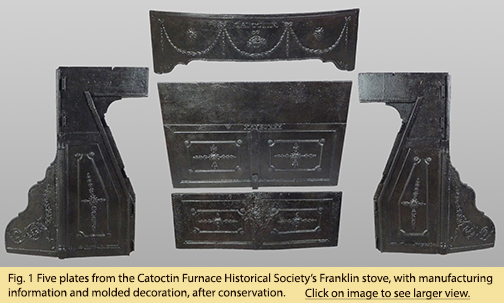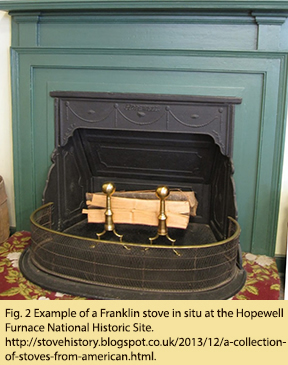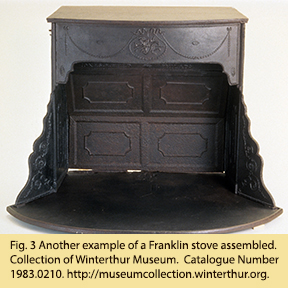Curator's Choice 2016
Functional and Stylish: A Cast Iron Franklin Stove from Catoctin Iron Furnace
May 2016
By Francis Lukezic, MAC Lab Conservator
 The Catoctin Iron Furnace was in operation from 1776 to 1903 and remnants of this once industrious facility can still be seen in the Cunningham Falls State Park, in Frederick County, Maryland. During its working life, the furnace produced raw pig iron, ammunition during the Revolutionary War, and household items such as stoves, utensils, and tools (Anderson 2013).
The Catoctin Iron Furnace was in operation from 1776 to 1903 and remnants of this once industrious facility can still be seen in the Cunningham Falls State Park, in Frederick County, Maryland. During its working life, the furnace produced raw pig iron, ammunition during the Revolutionary War, and household items such as stoves, utensils, and tools (Anderson 2013).


Recently, the Catoctin Furnace Historical Society brought several iron objects in their collection to the MAC Lab to receive conservation. The objects are items that were either made or used at the furnace and required cleaning to remove soil and corrosion on the surface, followed by the application of protective coatings. One of these objects is a cast iron Franklin stove consisting of eight plates that, when assembled, neatly fit into a fireplace (Figure 1). Two of the stove plates proudly display information about its place of manufacture, CATOCTIN and W. MAYBURRY. Willoughby Mayburry owned and operated Catoctin Furnace from 1811 to 1820 (Anderson 2013). Of the eight plates, five have fashionable designs from the Early Republic period molded in to the surface. The designs are comprised of a hanging basket of  flowers and fruit, bows, swags of leaves, a variety of floral motifs, and beaded edging. Figures 2 and 3 demonstrate how the stove plates are assembled in to a fireplace.
flowers and fruit, bows, swags of leaves, a variety of floral motifs, and beaded edging. Figures 2 and 3 demonstrate how the stove plates are assembled in to a fireplace.
The stove made at Catoctin Furnace is called a Franklin because it is based on a model that was invented by Benjamin Franklin in the 1740’s. Franklin’s original stove plate design incorporated a complex arrangement of heat exchanger and down-draft flue that would supposedly extract more heat from the fire’s fumes and thus be more efficient in heating a room (Howell 2013). Unfortunately, the design did not work that well, or not at all, and the stove became a commercial failure for Franklin (Howell 2013). Franklin did not have a patent on his stove and subsequent inventors and manufacturers began simplifying and improving his design into a model that would become viable and functional. Throughout the 19th century, some of the improved models were patented and Franklin’s prestigious name continued to be associated with that type of iron stove. The molded decoration on the stove plates also evolved and varied greatly, reflecting the changes in fashion over time.
Despite its design flaws and the development of other modern heating sources, the Franklin stove continued to appeal to consumers, even in to the 20th century. In a Tod Hunter Inc. catalogue from 1930, the company offered a variety of reproduction Franklin stoves for sale (Figure 4). The Franklin stoves of the past, such as the one made at Catoctin Furnace, continue to be admired for their decorative qualities and exemplary display of iron casting technology.